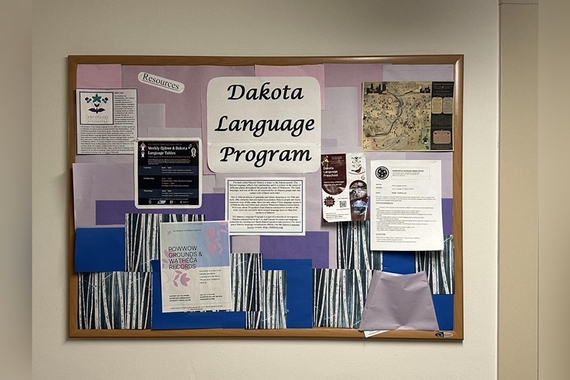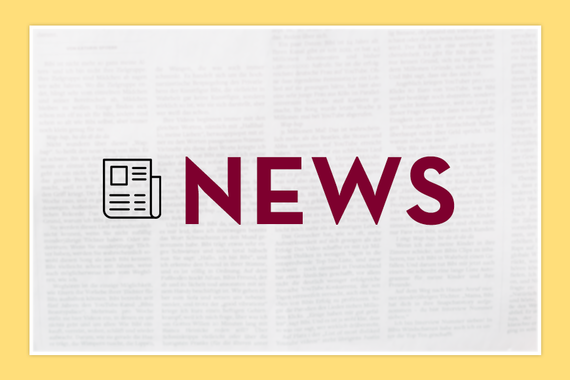50th Anniversary: AIS’s Past, Present, and Future
In early 1969, a group of University faculty, community representatives, and Native American students presented a proposal for an American Indian studies department. The committee defined the content and structure of an undergraduate degree, including curricula for indigenous language courses in Dakota and Ojibwe. In June of that year, the Board of Regents approved the proposal and the Department of American Indian Studies (AIS) was born.
The department was the first of its kind in the world. In the 50 years since its creation, it has served students and employed scholars who are at the cutting edge of research and engagement work in American Indian studies. AIS has maintained a commitment to the native community throughout the years, and community outreach is foundational to the department’s success. Their engagement work takes many forms: from the Native Artist Talk Series, which brings indigenous artists to campus, to student-led groups like Canoe Rising, AIS sustains their connection to the Twin Cities Native American community.
Teaching Ojibwe and Dakota has positioned AIS as a leader in indigenous language revitalization efforts. The department launched the Ojibwe People’s Dictionary, an online Ojibwe-English resource featuring the voices of Ojibwe speakers. It is one of the most heavily used sites on the University Libraries’ website.
In 2019 Cantemaza Neil McKay and Sisokaduta Joe Bendickson launched online Dakota Language courses. The courses reach community members and students at other universities, subsequently tripling the enrollment in beginner Dakota.
For the bicentennial celebration in 2019, the department took time to pause and reflect on its origins, to honor students, alumni, and staff, and to look forward to future goals and achievements.
Looking Back
The evening featured two discussions: “Looking Back” and “Looking Forward.” Included in the first panel were Dennis Jones, Jim Denomie, Lisa LaRonge, and LeMoine LaPointe. The four talked about their experiences with AIS and how it has grown throughout the years.
Denomie, a UMN graduate and Ojibwe painter, spoke warmly about the University and how it prepared him for his career as an artist. “My experience at the U was tremendous,” said Denomie. “It changed my direction and perceptions.”
After a hiatus from his education, Denomie re-enrolled at the University. It was here that he reinvigorated his love for art. Denomie’s work has been featured locally and across the world, from the public collections of the Minneapolis Institute of Art, the Weisman Art Museum, the Walker Art Center and more to exhibitions and private collections in Germany.
AIS as a place for building community and connecting with other indigenous students was a prominent theme throughout the panel. With a rich history rooted in Native student activism, retired AIS instructor Dennis Jones encourages “combin[ing] the contemporary with the old.” The looking-back panel did exactly that as the featured alumni and staff reminded attendees of the department’s origins and subsequent growth.
Looking Forward
The second panel included students and staff Andrea Carlson (Kaageyaasigek), Fawn J. Sampson, Florencia Pech-Cárdenas, Sasha Suarez, and Summer DuMarce. This second panel provided insight into what AIS looks like today and in the future.
“It’s important to think about what we’re doing in the community,” said Suarez, a PhD candidate in American studies who studies American Indian history, reflecting on the AIS department’s integral connection to the community.
Sampson, AIS’ community engagement coordinator, talked about what keeps her motivated. “There is an abundance of people who care and are working to strengthen the community and revitalize language,” she said.
In his closing remarks, Department Chair David Chang spoke of AIS’ goals for the future. “As we continue to grow while remaining true to our roots, we reaffirm our commitment to our students and our Native community in the area, in the state, and in the region. We reaffirm our commitment to revitalizing the Dakota and Ojibwe languages. We reaffirm our commitment to exploring the depth and breadth of American Indian and Indigenous creativity. We rededicate ourselves to the exploration of the Indigenous past, present, and future. We look to the development of a graduate program to train PhD students. With the top faculty we have, we can be the leading program in the United States to train new faculty in American Indian and indigenous studies.”
Making Plans
AIS is the result of students and community members insisting that the University respond to the needs of indigenous people. The University sits on Dakota land, so every day, students, staff, and visitors are consciously or unconsciously encountering indigenous influences. “AIS’ heritage goes to the generations of Native American and indigenous people who insisted, who persisted, who persevered,” says Chang. “The department is rooted in generations of work by American Indian people.… We are continuing that work in connection with five decades as a department and many generations of Native people’s work.”
As the local indigenous community has changed over the last 50 years, the department has evolved alongside it. The department holds the same excitement and curiosity for discovering how to accommodate the needs of this changing community as it did when it was built.
In 50 years, the AIS department has gained international recognition and become connected to the global indigenous community. The 50th anniversary serves as a time to reflect on what has been to make plans for what will be.
This story was written by an undergraduate student in Backpack. Meet the team.



